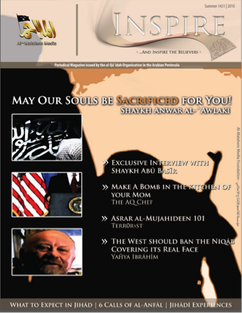Content Dissemination
The Internet has significantly increased the opportunities for terrorists to disseminate content, which serves the further aims of recruitment and fundraising.
Before the Internet came into being, terrorists had to depend on attracting the attention of traditional media i.e. television, radio and print. The process of editorial selection also left them with little control over how they were portrayed. With the Internet, terrorists can not only reach out to a larger group of people, but do so constantly. But at the same time, the Internet subverts the normal propaganda structure. Terrorist propaganda can be divided into three categories, namely propaganda intended for the general public, that for sympathizers, and that for members of the terrorist group itself. With everyone having access, it is more difficult for terrorists to tailor their message to suit a specific audience. Nevertheless, the fact remains that the Internet has been an extremely powerful tool.
Before the Internet came into being, terrorists had to depend on attracting the attention of traditional media i.e. television, radio and print. The process of editorial selection also left them with little control over how they were portrayed. With the Internet, terrorists can not only reach out to a larger group of people, but do so constantly. But at the same time, the Internet subverts the normal propaganda structure. Terrorist propaganda can be divided into three categories, namely propaganda intended for the general public, that for sympathizers, and that for members of the terrorist group itself. With everyone having access, it is more difficult for terrorists to tailor their message to suit a specific audience. Nevertheless, the fact remains that the Internet has been an extremely powerful tool.
Internet content can be split into static and dynamic categories (UN, 2009). Static content refers to websites, which appear as fairly constant locations; dynamic content consists of images, sound and video. Up to 2001, terrorists maintained an online presence mainly through static websites, but this has since shifted to more dynamic content, distributed through a pyramid system of bulletin board forums.
How Terrorist uses YouTube
Both types of content enable terrorists to connect with impressionable young people and influence them to join their cause. Apart from employing website technologies like audio and video to present their message persuasively, online bulletin boards and discussion forums are additional avenues for them to reach out (Weimann, 2004). Social networking has also enhanced terrorists’ ability to disseminate propaganda. Most terrorist groups have open Facebook pages, such that anyone interested can view the information and discussion boards, and watch propaganda videos. More importantly, interest groups on Facebook bring together people with similar views, and can help terrorists target people who may be sympathetic to their cause and easier to manipulate. And by viewing users’ profiles, terrorists can decide who they want to target and how they should tailor their message. YouTube has been praised by the well-known convicted terrorist, Younis Tsouli, who testified that the videos have been a very effective means boosting funding and recruitment (Weimann, 2010).
How extremist websites influenced naturalized U.S. citizen Mohamed Mohamud to plot a bomb attack
The Internet explains why we have seen self-radicalised individuals carrying out isolated attacks or planning to do so. They may never have had any real-life contact with terrorists, but absorbed these ideas online. One example is Mohamed Mohamud, a 19-year old Somali-American, who plotted to bomb aChristmas tree-lighting event in Oregon in November 2010. He reached out online to terrorists and wrote articles for a magazine advocating violent jihad, Jihad Recollections.
Even more recently, U.S. soldier Nasser Abdo was arrested for planning an attack in Texas in July 2011. A copy of al-Qaeda’s online magazine, Inspire, was found among his belongings. The magazine urges American Muslims to carry out attacks at home, as part of the concept of “individual jihad”.
Besides recruitment, the Internet has boosted the fundraising efforts of terrorist groups, which are heavily dependent on donations to fund their operations. Online fundraising is now so commonplace that some terrorist organizations can accept donations via PayPal, the widely used online payment service. Terrorists can also easily post instructions on discussion forums giving directions on how donations can be made (Weimann, 2004).



